MEASAT Satellite Systems Sdn. Bhd., formerly Binariang Satellite Systems Sdn. Bhd., is a Malaysian communications satellite operator that owns and operates the MEASAT and AFRICASAT spacecraft. The company provides satellite services to leading Malaysian broadcasters Direct-To-Home, (DTH) platforms and telecom operators. With capacity across six communication satellites, the company provides satellite services to over 150 countries.
The Malaysian Centre of Remote Sensing (MACRES) was a Malaysian remote sensing centre. An agency under the Ministry of Science, Technology and Innovation (Malaysia). Its role was to provide data and solutions for remote sensing applications. In 1991, it was recognised as a federal institute of research in the field of remote sensing and related technologies. The main centre was located in Kuala Lumpur and the ground receiving centre was located in Mentakab, Pahang, Malaysia.

Soyuz TMA-11 was a human spaceflight mission using a Soyuz-TMA spacecraft to transport personnel to and from the International Space Station (ISS). The mission began at 13:22 UTC on October 10, 2007, when the spacecraft was launched from the Baikonur Cosmodrome by a Soyuz FG launch vehicle. It brought to the station two members of the ISS Expedition 16 crew, as well as Sheikh Muszaphar, the first Malaysian in space. TMA-11 remained at the station as an escape craft, and returned safely to Earth on April 19, 2008, after it had been replaced by Soyuz TMA-12. Although the vehicle landed safely, it suffered a partial separation failure which caused a ballistic re-entry that in turn caused it to land 475 km from the intended landing point.

Jamaluddin bin Mohd Jarjis was a Malaysian politician, diplomat and Minister of Science, Technology and Innovation. He served as the Chairman of the 1 Malaysia Peoples' Housing (PR1MA) and Malaysian special envoy to the United States.
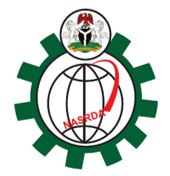
The National Space Research and Development Agency (NASRDA) is the national space agency of Nigeria. It is a parastatal under Federal Ministry of Science and Technology. The agency is based in the Nigerian capital city of Abuja in the Lugbe district and has a ground receiving station, among various other sites. In the past, it has cooperated in space technology with the United Kingdom, China, Ukraine and Russia. The agency has struggled with meeting its financial plans and some of its facilities are rundown. Despite this, the space agency is one of the most advanced space agencies in Africa, boasting of four satellites and very grand ambitions. Nigeria's satellites have been praised for their high-resolution images. NASRDA is host to one of UN-SPIDER's Regional Support Offices (RSO) in Africa.

The Angkasawan program was an initiative by the Malaysian government to send a Malaysian to the International Space Station on board Soyuz TMA-11. The program was named after the Malay word for astronaut, Angkasawan. It resulted in Sheikh Muszaphar Shukor becoming the first Malaysian in space on 10 October 2007.
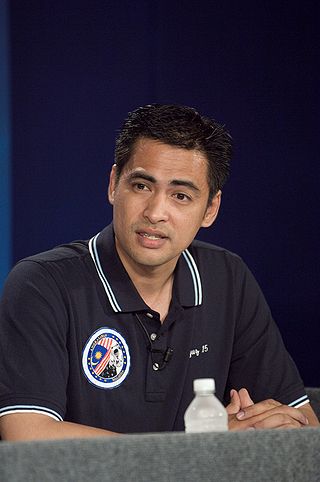
Sheikh Muszaphar Shukor Al Masrie bin Sheikh Mustapha is a Malaysian orthopaedic surgeon and spaceflight participant. He launched to the International Space Station aboard Soyuz TMA-11 with the Expedition 16 crew on 10 October 2007. Sheikh Muszaphar flew under an agreement with Russia through the Angkasawan program, and returned to Earth on 21 October 2007, aboard Soyuz TMA-10 with the Expedition 15 crew members, Fyodor Yurchikhin and Oleg Kotov.

Faiz bin Khaleed is a Malaysian military dentist with the Malaysian Armed Forces. In September 2006, he was selected as one of two final candidates to undergo astronaut training in Star City as part of the Angkasawan program. The other candidate was Sheikh Muszaphar Shukor.
TiungSAT-1 is the first Malaysian microsatellite. The satellite is developed through the technology transfer and training programme between Astronautic Technology Sdn Bhd (ATSB) Malaysia and Surrey Satellite Technology Ltd., United Kingdom. TiungSAT-1 was launched aboard Dnepr rocket from Baikonur Cosmodrome, Kazakhstan on 26 September 2000.

MEASAT-3 was a Malaysian communications satellite which was successfully launched on 11 December 2006 from the Baikonur Cosmodrome in Kazakhstan.
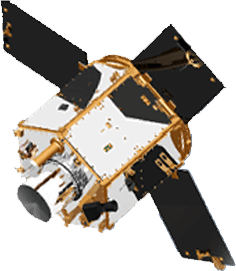
RazakSAT is a Malaysian Earth observation satellite carrying a high-resolution camera. It was launched into low Earth orbit on 14 July 2009. It was placed in a near-equatorial orbit that presents many imaging opportunities for the equatorial region. It weighs over three times as much as TiungSAT-1 and carries a high-resolution Earth observation camera. Developed in conjunction with the Satrec Initiative, the satellite's low inclination brought it over Malaysia a dozen or more times per day. This was intended to provide greatly increased coverage of Malaysia compared to most other Earth observation satellites. An audit report released in October 2011 revealed that the satellite had failed after one year of operation.
The Malaysian Remote Sensing Agency, abbreviated MRSA or ARSM, was a department responsible for remote sensing under the Ministry of Science, Technology and Innovation (Malaysia). On 20 February 2019, the Malaysian Cabinet had approved the merging of the Malaysian Remote Sensing Agency (MRSA) and National Space Agency (ANGKASA) to establish of Malaysian Space Agency (MYSA).
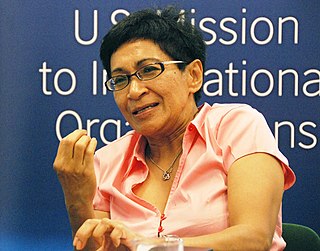
Emerita Professor Tan Sri Dr. Mazlan binti Othman is a Malaysian astrophysicist whose work has pioneered Malaysia's participation in space exploration. She was her country's first astrophysicist, and helped to create a curriculum in astrophysics at the national university, as well as to build public awareness and understanding of astronomy and space issues. She was appointed Director General of Angkasa, the Malaysian National Space Agency and served as the director of the United Nations Office for Outer Space Affairs in Vienna from 2007 to 2014.
Astronautic Technology Sdn Bhd or better known as ATSB was established on 1 May 1995 and is wholly owned by the Minister of Finance Inc under the supervision of the Malaysian Ministry of Energy, Science, Technology, Environment and Climate Change (MESTECC).

Science policy in Malaysia is regulated by the Ministry of Science, Technology, and Innovation. The ministry focuses on five areas: biotechnology, ICT policy, industry, sea to space and core science and technology. Other ministries, such as the Ministry of Agriculture and the Ministry of Health also have science departments. Training in scientific areas was promoted during the 1970s and 1980s. From 1987 to 1997 research and development used 0.24% of GNP, and in 1998 high-tech exports made up 54% of Malaysia's manufactured exports.
Siva Vanajah is a Malaysian engineer and one of the finalist of the Malaysian Angkasawan program, a program to send a Malaysian to the International Space Station. An ethnic Indian, she was the only woman among four finalists who outlasted 11,000 other Malaysians that applied for the astronaut selection process in 2003, ultimately losing her bid to Sheikh Muszaphar Shukor and Faiz Khaleed. All the four finalists were sent to Moscow for training by the Russian Space Agency.
Independence-X Aerospace or better known as IDXA is a NewSpace Transportation Systems company based in Seremban, Malaysia. It provides Microgravity Experiment Re-entry Capsule Service, Launch Services, Low-Cost Satellite Development and Launch, Ground Station Service, and aims for Interplanetary Missions.
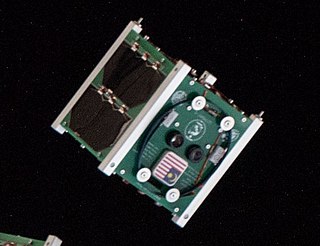
UiTMSAT-1 was a Malaysian nanosatellite, built primarily by Universiti Teknologi MARA (UiTM) as part of the multi-nation Birds-2 project. The 1U CubeSat was launched into space on 29 June 2018 and deployed from the International Space Station (ISS) on 10 August 2018.
The Malaysian Space Agency, abbreviated MYSA, is the national space agency of Malaysia. On 20 February 2019, the Malaysian Cabinet had approved the establishment of MYSA through the merging of Malaysian Remote Sensing Agency (MRSA) and National Space Agency (ANGKASA).
Borneo SubOrbitals was a public-private spaceflight venture created in 2019. In 2022, the project was replaced by SPACE educational programme in collaboration with MEASAT Satellite Systems which allows students to launch rockets in virtual reality.











